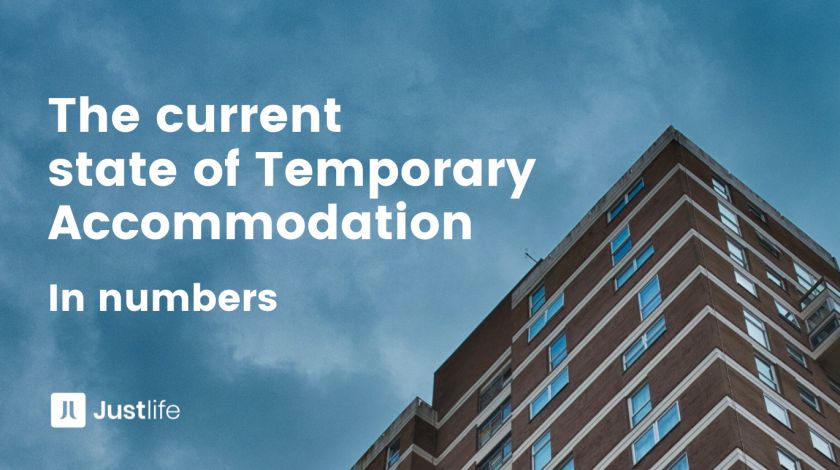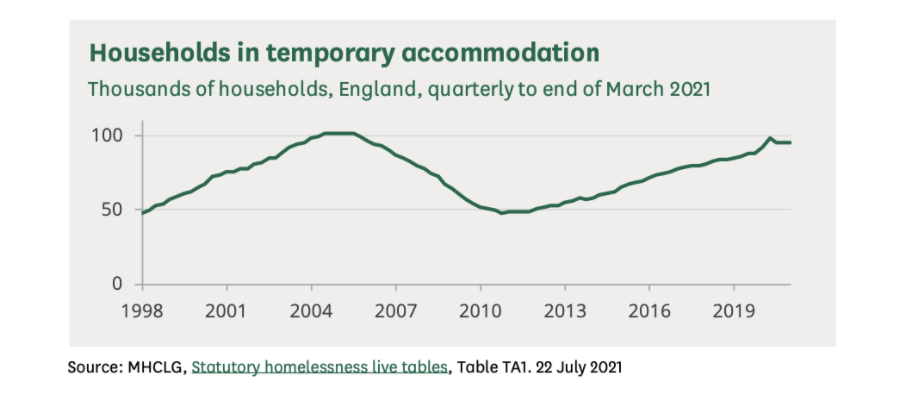As the UK moves into a new phase of the pandemic, there are a number of factors that indicate we may be about to face an increase in poverty, which in turn may lead to an increase in homelessness and the use of TA.
A number of schemes that have supported people across society during this time have come to an end. Furlough finished on the 30th of September, and the Universal Credit £20 per week uplift on the 6th of October. There were approximately 1.3 million people on Furlough at the end of August, and 5.8 million people currently on Universal Credit.
While it is too early for us to analyse the impact the end of this support will have on people’s lives; there is no doubt that such a drastic change in income for so many will have an effect - and experts say this will drive poverty and use of foodbanks. In relation to the end of the uplift, a Whitehall Official told the Financial Times in a recent article:
“The internal modelling of ending the UC uplift is catastrophic. Homelessness and poverty are likely to rise, and food banks usage will soar. It could be the real disaster of the autumn.”
Fuel crisis
As we move into a cold winter with darker days, a backdrop of rising gas prices and the withdrawal of financial support such as Universal Credit will squeeze household finances even further - forcing people to choose between heating their homes or eating.
The energy price cap, set by Ofgem to control the cost of gas in the UK, has risen by 12% or £139 - a rise that the End Poverty Fuel Coalition believe will see 500,000 people plunged into fuel poverty.
This combination of increasing fuel prices and decreasing benefits has both a physical and mental impact. Living in a cold home increases the likelihood of damp and mould developing, which can lead to a variety of cold-related health issues such as respiratory conditions. The fuel crisis isn’t just about heat, it’s about health, and an onset of health issues will only increase pressure on a NHS that historically struggles during the winter months.
The impact of living in such cold conditions has been well documented in our previous research into the living conditions found in some temporary accommodation - particularly Unsupported Temporary Accommodation (UTA).
Wider Market
Over the past few decades, social housing provision has dwindled while mortgage and rent prices have soared. The average house price in the UK is now £267,587 which, coupled with rising living costs and stagnating wages, makes home ownership increasingly difficult for first-time buyers.
But for many of those living in the private rented sector, home ownership feels completely out-of-reach as they are already saddled with record-high rent prices. Outside of London, rents have risen at their fastest rate since 2008, and they don’t show signs of slowing down. As Savills’ Head of Residential Research explains, “New buyer demand continues to outweigh supply”, which is likely to continue driving up rent prices, and increase the financial pressures on tenants.
As these financial pressures intensify and as rent prices outrun wages, the risk of people on low incomes falling into homelessness grows. Research by the Joseph Rowntree Foundation discovered that around a million renting households are worried about being evicted in the next three months (11% of all renters), half of which are families with children, and 1.7 million renting households are worried about paying their rent (20% of all renters).
Savills’ predicts that in the years leading up to 2025 “house prices are forecast to increase by a total of 21.5%”, which will leave millions of people stuck in the private rented sector where around a third of their income will continue to be eaten up by rent payments.
The use of Temporary Accommodation in England is on the cusp of being the highest it’s been in 2 decades. This, combined with the current context we’re in - almost 2 years of the pandemic on top of an already stretched homelessness and temporary housing system - all points to now being the time we must collectively take action to find systemic solutions at all levels and change things for the better, to prevent these grim figures climbing even higher.








